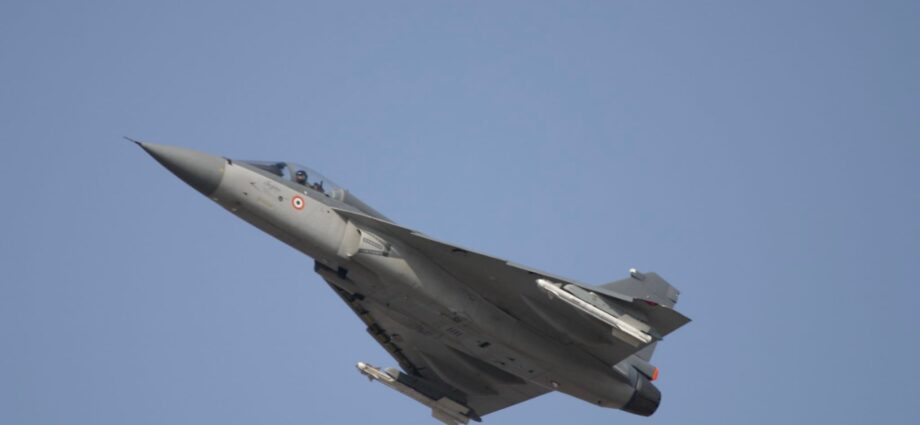How Tejas Mark 2 is evolving into a bigger, powerful fighter
With the Indian Air Force (IAF) having ordered 123 Tejas fighters (six squadrons) and foreign air forces evaluating India’s home-grown light combat aircraft (LCA) for acquisition, the Tejas Mark 1 is evolving from a light fighter to a bigger and more powerful medium fighter that could be a clear notch above its possible adversaries in South Asia.On November 15, the IAF signed off on a comprehensive design review (CDR) of the Tejas Mark 2, clearing the construction of a new prototype of the LCA for construction and testing.A CDR is a critical step in designing and developing a new aircraft. It allows the customer air force to examine the proposed blueprints in detail to be sure the aircraft design is viable, ready for fabrication and testing and that it would achieve its stipulated performance within the laid down cost, schedule and risk.The IAF’s acceptance of the CDR allows Hindustan Aeronautics Ltd (HAL) to start releasing drawings of the Mark 2’s first prototype and producing them.The Tejas Mark 2 is no longer an LCA, but a significantly larger and more capable Medium Combat Aircraft (MCA), with a higher thrust engine and a 1.5-metre increase in length. While there is no change in the size of the wings, they have been pushed outwards, effectively increasing the fighter’s wingspan by 300 mm.Replacing the 1980s appearance of the Tejas Mark 1, the Mark 2 has a 21st century look. Ahead of the wings, a canard has been added, creating a resemblance with contemporary fighters such as the Rafale, Eurofighter or the Sukhoi-30MKI. The canard provides an additional control surface that creates a vortex, increasing the lifting capability and agility of the aircraft.The key change in the Tejas Mark 2 is its significantly more powerful General Electric (GE) F-414 engine, which will replace the current GE F-404 power pack. For close-in dog fighting against enemy fighters, which involves sudden acceleration, sharp climbing and sustained turning, the F-404 engines’ peak thrust of 83 KiloNewtons (kN) is considered inadequate. For that reason, the Aeronautical Development Agency (ADA) has decided to power the Mark 2 with a GE F-414 engine that will deliver 98 kN of peak power.The new engine will enable the Mark 2 to take off with a maximum all-up weight of 16.5 tonnes, which will include the 10-tonne weight of the fighter and 6.5 tonnes of external payload.The increased carriage creates a wealth of options for mission planners. The Tejas Mark 2 can carry 3.5 tonnes of fuel in external drop tanks, in addition to 3.3 tonnes in its internal fuel tanks, while still carrying three tonnes of weapons and sensors.Weapons carriageThe Tejas Mark 2’s increased payload capacity will enable it to integrate significantly more weapons and sensors than the Mark 1 fighter. For air-to-air combat, the Mark 2 will carry the indigenous Astra Mark 1 and Mark 2 missiles. It would also carry Rudram anti-radiation missiles, developed by the DRDO’s Defence R&D Laboratory (DRDL) Hyderabad, and tested on October 9.Meanwhile, the DRDO’s Armament Research & Development Establishment is developing a range of bombs for the Tejas Mark 2, such as the Tara (high speed, low drag) bomb that is mounted on the pylons. It will also have the option of carrying laser guided bombs (LGBs), fitted with laser-guidance kits. While there are no plans to integrate the game-changing Meteor beyond visual range (BVR) air-to-air missile, the Tejas Mark 2 may be integrated with the SCALP missile that has been procured along with the Rafale fighters.To carry this payload, the Tejas Mark 2 will have 11 hard points, including one on each wingtip for the ASRAAM air-to-air missile. There will be three under-wing pylons on each side, one wet station on each side for fuel drop tanks, while the other three hard points are for long-range missiles such as the Astra and Rudram.Besides a new engine, the Tejas Mark 2 would have its internals rearranged, to make them more accessible and maintenance friendly. While building the Mark 1, these “line replacement units” (LRUs) were positioned randomly, as the need arose. Their optimal rearrangement would improve space utilisation, accessibility, and make maintenance easier and quicker, reducing turn-around time between operational missions.Furthermore, the Tejas Mark 1 is burdened with 300 kilos of ballast — dead weight inserted incrementally while designing the fighter, to correct its centre of gravity. If the internal LRUs are re-arranged and the ballast removed, the Tejas Mark 2 could instead carry 300 kg more of useful payload. Source: https://www.facebook.com/NextGenerationWeapons
![]()
- All you wanted to know about the Vishu festival - April 15, 2022
- Our Unsung Heroes (Part-6) – Chattarpati Sambhaji Maharaj - January 1, 2022
- Indian Navy to test Rafale-M jet for INS Vikrant - January 1, 2022

